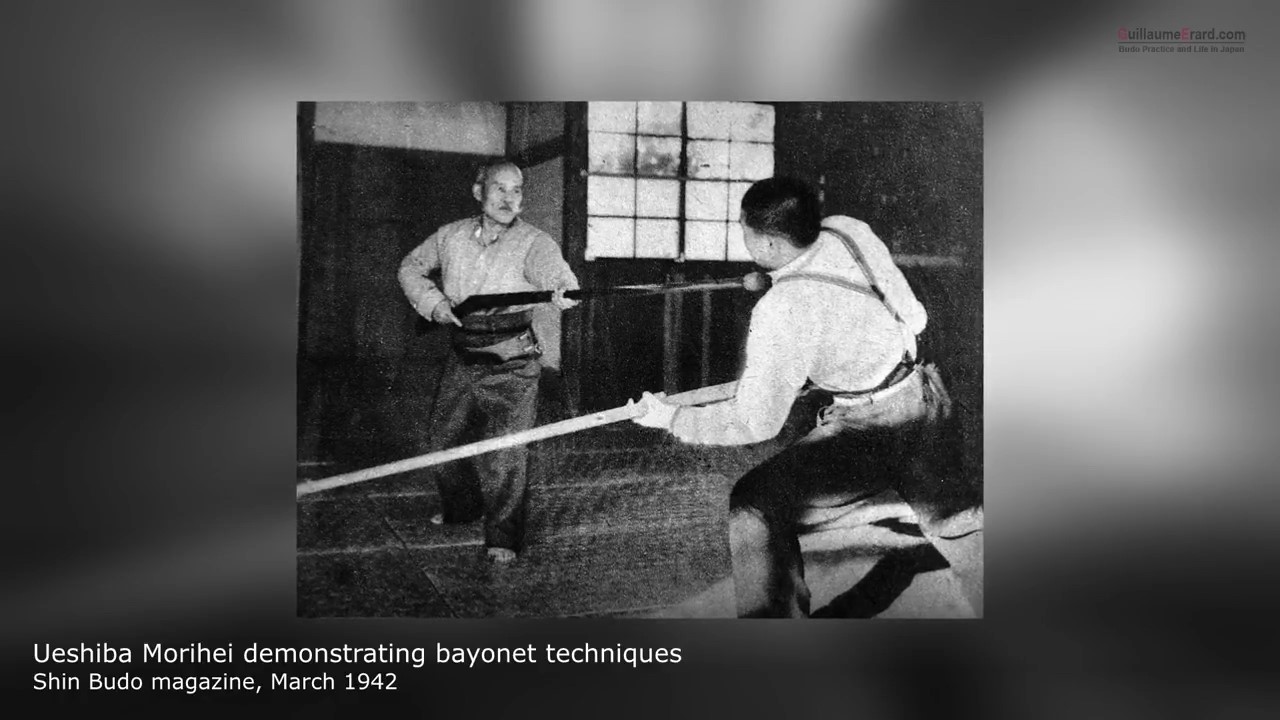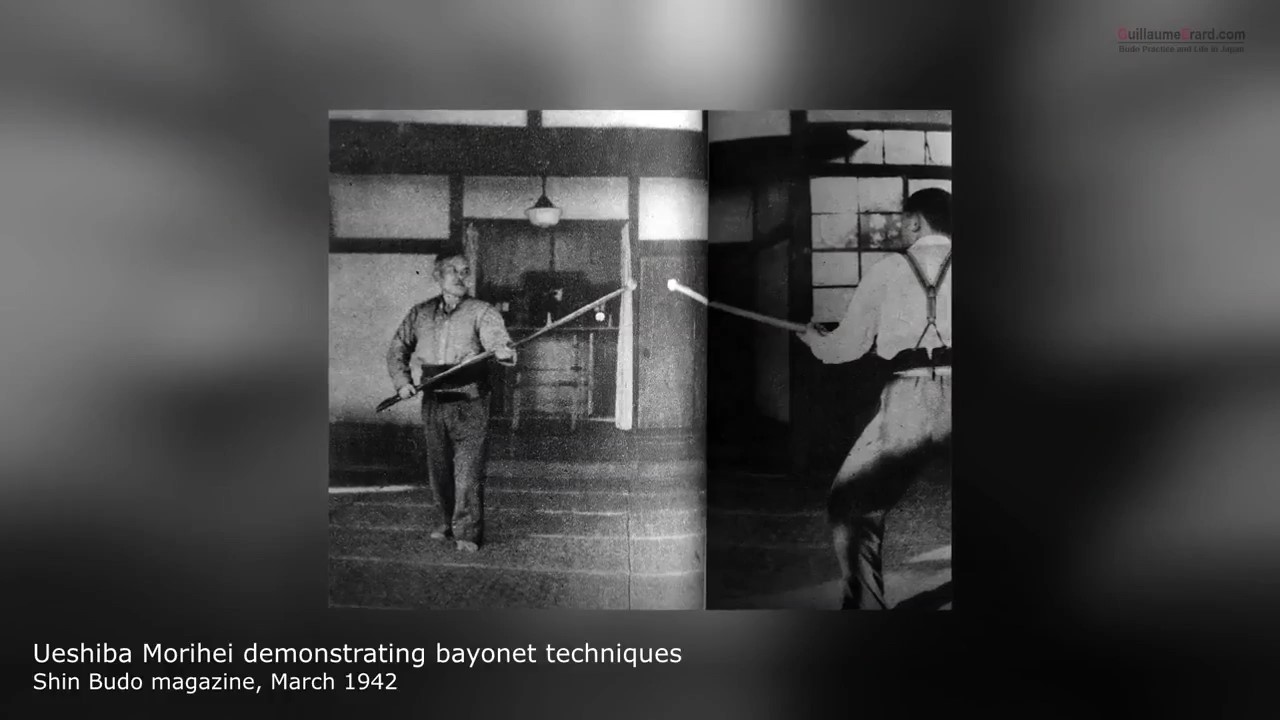Jūkendō 銃剣道
Jūkendō is the sporty, Japanese bayonet fight. It is fought with a mock gun made of oak (Mokujō). The armor and clothing are largely identical to those in Kendo. Only thrusts are made.
The sport got established after the Second World War in order to be able to train the bayonet techniques furthermore. Kata is practiced and competitions are held. Jūkendō is also an official school sport. The image of this sport is negatively connotated in the Japanese public by the war experiences of the older generation.
The video shows excerpts from the 2014 Japanese championships and quotes from a
video of 2018: "Discussion on Morihei Ueshiba's Weapons".

